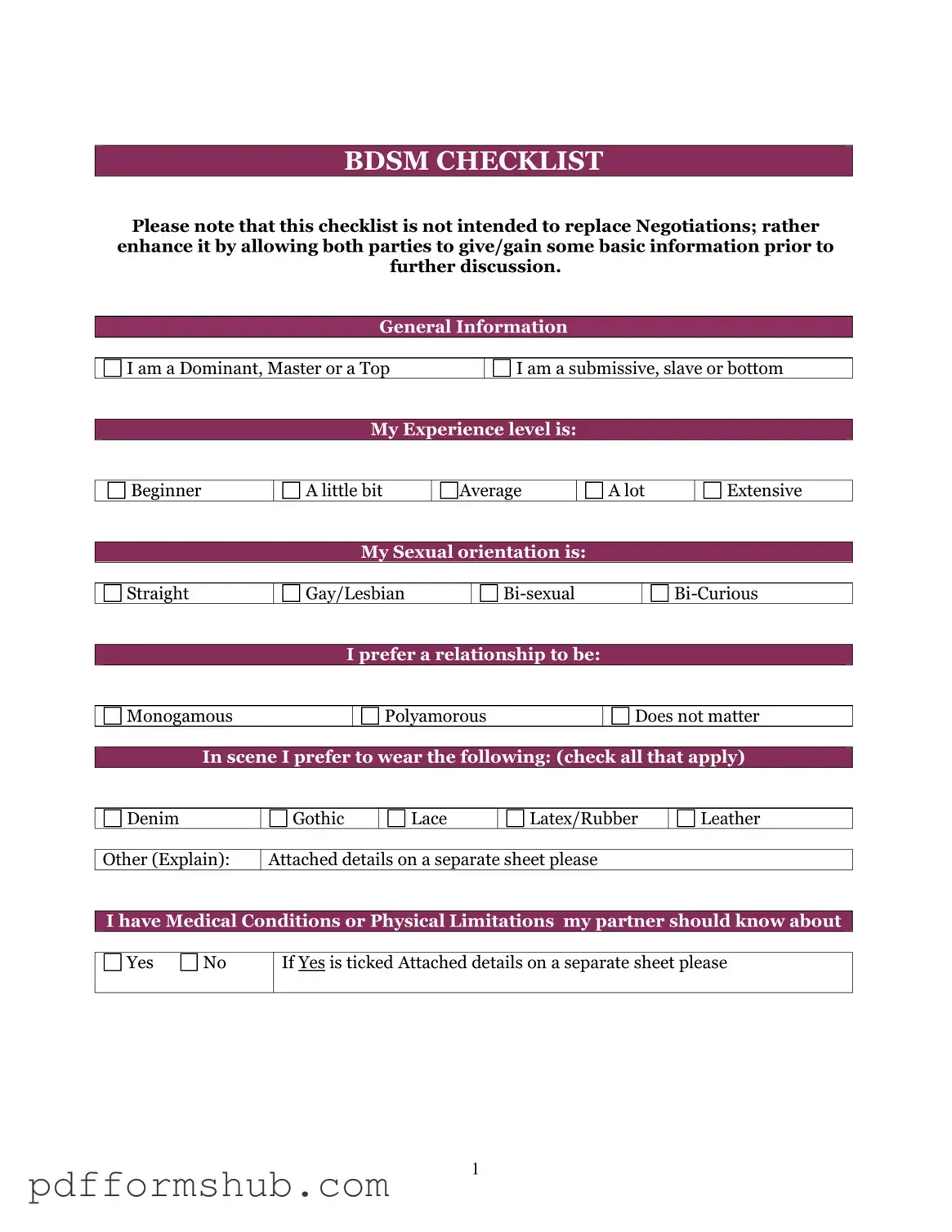The BDSM Checklist form serves as a vital tool for individuals exploring the diverse and complex world of BDSM practices. It encourages open communication and consent between partners, ensuring that everyone involved understands their desires, limits, and boundaries. This form typically includes sections for listing various activities, preferences, and hard limits, allowing participants to express what they are comfortable with and what they absolutely wish to avoid. By providing a structured way to discuss interests such as bondage, discipline, dominance, submission, and sadomasochism, the checklist fosters a safe environment for exploration. Additionally, it often prompts users to consider emotional and physical safety, ensuring that all parties feel secure and respected. The checklist not only aids in establishing consent but also promotes ongoing dialogue, as interests and boundaries may evolve over time. Ultimately, it serves as a foundational document that enhances mutual understanding and respect, which are essential components of any healthy BDSM relationship.
